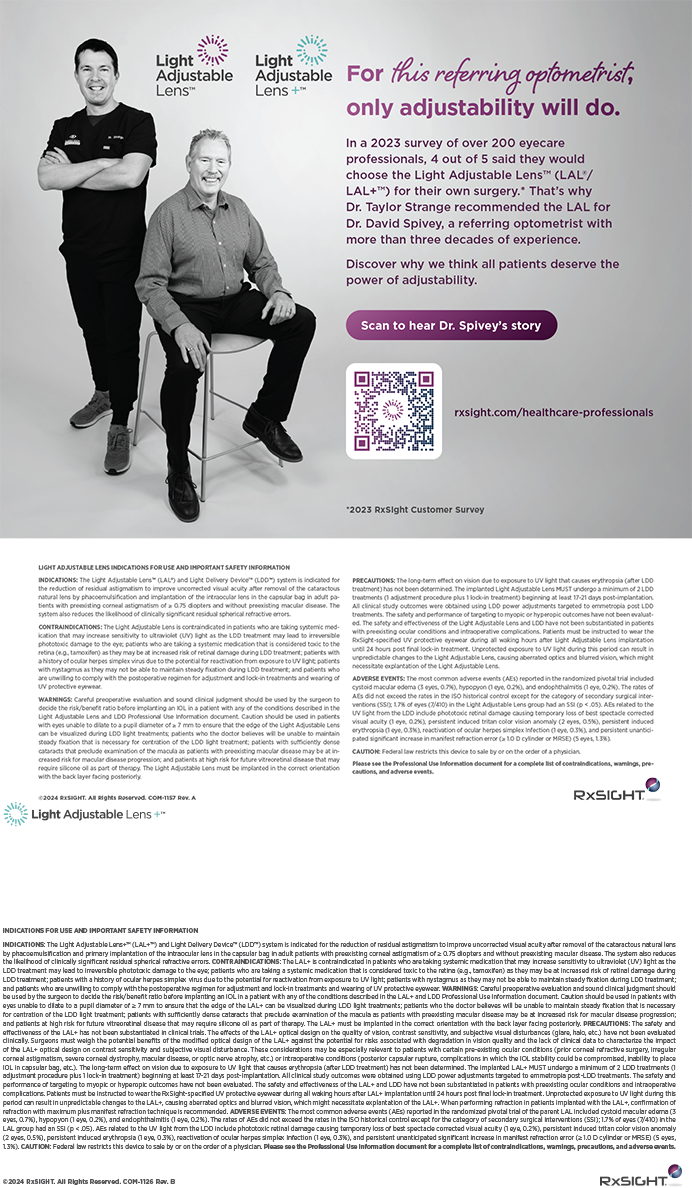In a conference call with investors to discuss third-quarter earnings in November 2015, Allergan executives were asked during the Q&A portion of the call what their outlook is for Restasis (cyclosporine ophthalmic emulsion 0.05%), given the recent positive data for Shire Pharmaceuticals’ dry eye disease (DED) drug candidate lifitegrast, which if approved would serve as the first pharmacological competitor for cyclosporine.
“I don’t believe this is going to be a fight to the death between Shire and Allergan,” said Bill Meury, president, branded pharma, at Allergan. “I said before that the gap between the prevalent [DED] population and the prescription-treated population is enormous. It’s larger than it is in most categories. The importance of [DED] is clear, and it’s getting more and more attention because of the impact it has on quality of life, the impact that it could have on vision, and positive postop[erative] outcomes.”
Shire recently announced topline results from OPUS-3, a phase 3 efficacy and safety study of lifitegrast. In the trial, the drug met the single primary endpoint for patient-reported symptoms of ocular dryness (mean change in eye dryness score from baseline to week 12 [P = .0007]) and the secondary endpoints of symptom improvement at days 14 and 42 (P < .0001 for both endpoints).
The OPUS-3 data came after the FDA formally declined lifitegrast in October 2015. At that time, the government agency requested further clinical tests along with more information about product quality. Shire says the OPUS-3 data put the drug candidate back on track for a commercial launch in 2016.
Mr. Meury stated that the DED market is large enough to support both drugs: “When you look at the data set between the drugs, I would simply say that we will have to see how lifitegrast holds up in the real world. … There’s no doubt eye care professionals are going to try something new, but I believe, long term, this category has the potential to double, so there’s more than enough to go around.”
Research and consulting firm GlobalData concurs. In a report, GlobalData stated that the global treatment market for DED will more than double in value from about $2.2 billion in 2014 to an estimated $4.6 billion by 2024, representing a compound annual growth rate of 7.9%.1
The growth will be driven primarily by the introduction of novel drugs, most notably lifitegrast, the report stated.
Catherine Daly, PhD, GlobalData’s senior analyst covering neurology and ophthalmology, stated in a news release that the paucity of DED treatments in the US and European markets will allow Shire to secure strong uptake and a sizable market share for lifitegrast.
“GlobalData expects that lifitegrast, which is anticipated to launch in the US in late 2016, will eventually reach peak sales of $1 billion across the nine (major markets) earning the drug blockbuster status,” Ms. Daly said. “Furthermore, Allergan’s blockbuster [DED] drug, Restasis, which generated an estimated $1.33 billion in US sales in 2014, is expected to launch in the European markets during the forecast period and will secure a sizable patient share.”
Allergan is also investing in the potential of an additional DED therapy in late-stage development. The company has entered into an exclusive licensing agreement with Mimetogen Pharmaceuticals to develop and commercialize tavilermide (MIM-D3), a topical formulation of a novel small-molecule TrkA agonist for the treatment of DED.
Under the terms of the agreement, Allergan will make an upfront payment of $50 million to Mimetogen and will fund phase 3 development of tavilermide. Mimetogen will additionally be entitled to receive potential milestone payments and royalties based on commercialization of the product.
Tavilermide is a small cyclic peptidomimetic of nerve growth factor, a naturally occurring protein in the eye responsible for the maintenance of corneal nerves and epithelium. Tavilermide is differentiated from other investigational therapies in DED, because it induces the production of mucin, a naturally occurring component of the tear film, and works upstream prior to inflammation, according to Allergan. Tavilermide is currently being evaluated in two multicenter phase 3 clinical studies in the United States.
Ms. Daly of GlobalData said that Mimetogen’s MIM-D3, Mitotech’s Visomitin, and RegeneRx’s RGN-259 are also expected to see strong sales growth by 2024, because these first-in-class drugs all have different therapeutic benefits to offer to DED patients.
In addition, Mr. Meury said during the conference call that Allergan is going to launch a multidose, preservative-free form of cyclosporine in the second half of 2016. The new formulation will be more convenient for patients, he added, because it will be easier to administer.
1. PharmaPoint: Dry Eye Syndrome – Global Drug Forecast and Market Assessment to 2024. www.globaldata.com. Accessed November 5, 2015.


